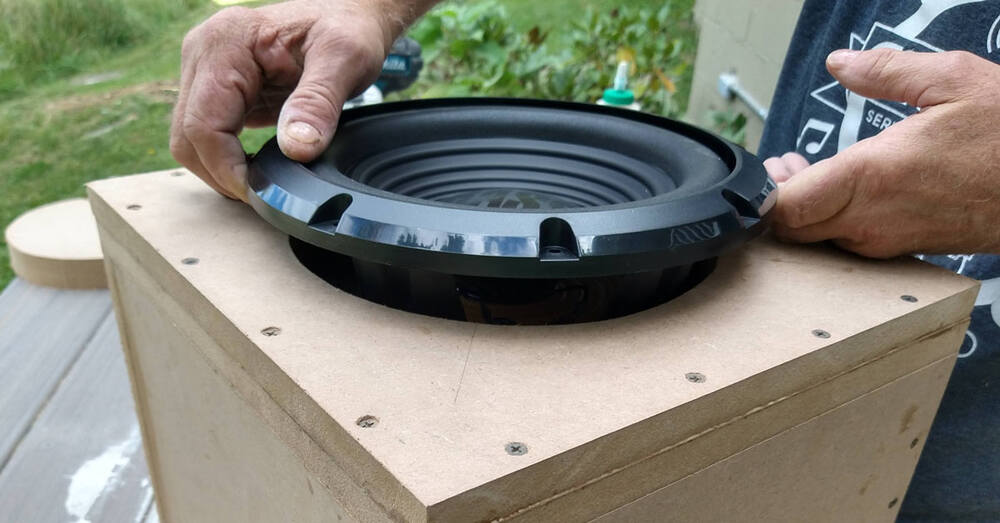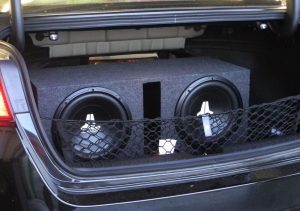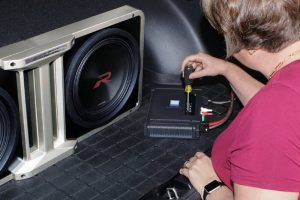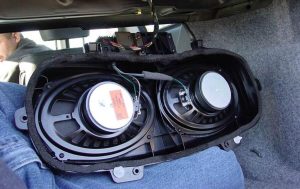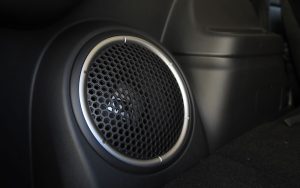A car subwoofer delivers that deep, powerful bass that transforms your music experience. But when it starts cutting out, the frustration hits hard. You’re cruising, enjoying your favorite track, and suddenly the bass drops—not in a good way. This guide dives into the reasons your subwoofer keeps cutting out and offers practical solutions to get your system booming again. Let’s troubleshoot step-by-step, covering common issues like wiring problems, amplifier settings, power supply concerns, and more. By the end, you’ll have a clear path to restore your car audio system’s performance.
Contents
- Understanding Why Subwoofers Cut Out
- 1. Check Your Wiring Connections
- 2. Verify Amplifier Settings
- 3. Address Power Supply Issues
- 4. Inspect the Subwoofer
- 5. Look for Amplifier Protection Mode
- 6. Examine the Head Unit
- 7. Consider Environmental Factors
- 8. Test for Active Noise Cancellation (ANC)
- 9. When to Seek Professional Help
- Preventive Tips for Reliable Subwoofer Performance
- Conclusion
Understanding Why Subwoofers Cut Out
Subwoofers cut out for several reasons, often tied to electrical, mechanical, or configuration issues. The problem might stem from loose connections, insufficient power, or an amplifier entering protection mode. Sometimes, the subwoofer itself could be damaged, or the settings on your audio system might be misconfigured. Identifying the root cause requires a systematic approach. Let’s break down the most common culprits and how to fix them, ensuring your bass stays consistent.
1. Check Your Wiring Connections
Loose or faulty wiring tops the list of reasons subwoofers cut out. Vibrations from driving can loosen connections over time, disrupting the signal or power flow. Start by inspecting all cables—power, ground, RCA, and speaker wires.
Power and Ground Wires
The power wire connects your amplifier to the car battery, while the ground wire anchors the system to the vehicle’s chassis. A loose or corroded connection here can cause intermittent power loss, making your subwoofer cut out. Check the battery terminals for corrosion and ensure the ground wire connects to a clean, unpainted metal surface. Sand down the contact point if needed to ensure a solid connection.
RCA Cables
RCA cables carry the audio signal from your head unit to the amplifier. A damaged or poorly connected RCA cable can interrupt the signal, causing the subwoofer to stop playing. Wiggle the cables while the system plays to see if the bass cuts out. If it does, replace the RCA cables with high-quality ones to avoid signal loss.
Speaker Wires
Speaker wires link the amplifier to the subwoofer. Loose or frayed wires can cause the subwoofer to cut out, especially during heavy bass hits. Ensure the wires are securely connected and free of damage. Use a multimeter to check for continuity if you suspect a break in the wire.
Fix: Tighten all connections, replace damaged cables, and secure wires to prevent movement. Quality wiring reduces resistance and ensures steady performance.
2. Verify Amplifier Settings
Your amplifier controls the power and signal sent to the subwoofer. Incorrect settings can push the amp into protection mode, causing the subwoofer to cut out. Here’s what to check:
Gain Setting
The gain knob adjusts the amplifier’s input sensitivity. Setting it too high can overdrive the amp, triggering protection mode. Play a test tone at moderate volume and adjust the gain until the sound is clean, without distortion. A multimeter or oscilloscope can help set the gain precisely by measuring the output voltage.
Low-Pass Filter (LPF)
The LPF ensures the subwoofer only plays low frequencies. If set too high, the subwoofer may try to reproduce frequencies it’s not designed for, causing strain and cutouts. Set the LPF between 80-120 Hz for most car audio setups, depending on your subwoofer’s specifications.
Subsonic Filter
A subsonic filter blocks ultra-low frequencies that your subwoofer can’t efficiently reproduce. Without this filter, the subwoofer may overwork, leading to cutouts. Set the subsonic filter around 20-30 Hz to protect the subwoofer and amplifier.
Fix: Recalibrate the amplifier settings. Use the owner’s manual for guidance and test the system at different volumes to ensure stability.
3. Address Power Supply Issues
Subwoofers demand significant power, and an inadequate power supply can cause cutouts, especially at high volumes. Your car’s electrical system—battery, alternator, and wiring—must keep up with the demand.
Weak Battery
A weak or old battery may struggle to supply consistent voltage, causing the amplifier to shut off during bass-heavy tracks. If your car’s lights dim when the bass hits, the battery might be the issue. Test the battery’s voltage with a multimeter; it should read around 12.6 volts when the engine is off and 13.8-14.4 volts when running. Replace a weak battery to ensure steady power.
Insufficient Alternator
The alternator charges the battery and powers the car’s electrical system. A stock alternator may not handle the added load of a high-powered audio system. If your subwoofer cuts out at high volumes, consider upgrading to a high-output alternator designed for car audio systems.
Voltage Drops
Voltage drops occur when the amplifier doesn’t receive enough power due to thin or long power cables. Use the correct gauge wire for your system—thicker wires (lower AWG numbers) reduce resistance. For example, a 1000-watt system typically requires 4-gauge wiring. Adding a capacitor can also stabilize voltage for quick power demands.
Fix: Test and replace the battery if needed, upgrade the alternator for high-power systems, and use appropriate wiring. A capacitor can help smooth out voltage fluctuations.
4. Inspect the Subwoofer
A damaged subwoofer can cause cutouts, even if the rest of the system works fine. Over time, heavy use or overpowering can wear out the subwoofer’s components.
Voice Coil Damage
The voice coil, which drives the subwoofer’s cone, can overheat or burn out if pushed beyond its limits. A damaged voice coil may cause intermittent sound or complete failure. Check the subwoofer’s impedance with a multimeter to ensure it matches the manufacturer’s specs. A reading far off the expected value indicates a damaged coil.
Cone or Surround Issues
The cone and surround (the flexible ring around the cone) can tear or degrade, affecting performance. Visually inspect the subwoofer for tears, cracks, or loose parts. Play a low-frequency test tone and watch for irregular movement or rattling sounds.
Fix: Replace a damaged subwoofer. If the voice coil or cone is faulty, repair is often impractical compared to buying a new unit.
5. Look for Amplifier Protection Mode
Amplifiers enter protection mode to prevent damage from overheating, short circuits, or low impedance. When this happens, the subwoofer cuts out until the issue resolves. Check the amplifier’s indicator lights—many show a red light when in protection mode.
Overheating
Amplifiers generate heat, especially during extended use at high volumes. Poor ventilation or a cramped installation can cause overheating. Ensure the amplifier has enough space for airflow and consider adding a cooling fan for high-power setups.
Impedance Mismatch
Subwoofers and amplifiers must match in impedance (measured in ohms). For example, a 2-ohm subwoofer paired with an amp stable at 4 ohms can overload the amp, triggering protection mode. Check the subwoofer’s impedance and wiring configuration (series or parallel) to ensure compatibility with the amplifier.
Short Circuits
A short circuit in the wiring or subwoofer can cause the amplifier to shut off. Inspect all wires for exposed conductors or contact with metal surfaces. Use electrical tape or heat-shrink tubing to insulate any exposed areas.
Fix: Improve amplifier ventilation, verify impedance compatibility, and repair any short circuits. Reset the amplifier by disconnecting power for a few minutes after fixing the issue.
6. Examine the Head Unit
The head unit (your car’s stereo) sends the audio signal to the amplifier. A faulty head unit or incorrect settings can cause the subwoofer to cut out.
Signal Issues
Some head units reduce bass output at high volumes to protect stock speakers, which can affect the subwoofer. Test the system with an external audio source, like an iPod connected directly to the amplifier’s RCA inputs. If the subwoofer works fine, the head unit may be the issue.
Settings
Check the head unit’s bass settings, equalizer, and subwoofer output. Ensure the subwoofer output is enabled and the bass is not overly boosted, which can distort the signal. Reset the head unit to factory settings and reconfigure it to rule out software glitches.
Fix: Adjust head unit settings or replace a faulty unit. A line-out converter can bypass head unit issues in some cases.
7. Consider Environmental Factors
Your car’s environment can affect subwoofer performance. Vibrations, temperature extremes, and movement can loosen connections or stress components.
Vibrations
Driving on rough roads can shake wires loose or dislodge the subwoofer box. Secure the subwoofer enclosure and use foam padding or mounting brackets to minimize movement.
Temperature
Extreme heat or cold can affect amplifier and subwoofer performance. Avoid installing the amplifier in areas exposed to direct sunlight or engine heat. In cold climates, let the system warm up before playing at high volumes.
Fix: Secure all components and choose installation locations that minimize exposure to harsh conditions.
8. Test for Active Noise Cancellation (ANC)
Some modern cars use active noise cancellation (ANC) to reduce cabin noise, which can interfere with subwoofer output. ANC systems use microphones to detect low frequencies and cancel them, sometimes mistaking subwoofer bass for road noise. Check your car’s manual to see if it has ANC and disable it if possible, often through the audio or vehicle settings menu.
Fix: Turn off ANC to prevent interference with your subwoofer’s bass.
9. When to Seek Professional Help
If you’ve tried the above steps and the subwoofer still cuts out, it’s time to consult a professional. Car audio shops have specialized tools, like oscilloscopes and signal generators, to diagnose complex issues. They can also check for internal amplifier faults or subwoofer damage that’s not easily visible. A professional installation may resolve persistent problems caused by improper setup.
Fix: Visit a reputable car audio shop for expert diagnostics and repairs.
Preventive Tips for Reliable Subwoofer Performance
To avoid future cutouts, follow these best practices for your car audio system:
- Use Quality Components: Invest in reliable subwoofers, amplifiers, and wiring from trusted brands like Rockford Fosgate, JL Audio, or Kicker.
- Proper Installation: Ensure all connections are secure and the system is installed by a professional or following manufacturer guidelines.
- Regular Maintenance: Periodically check wiring, clean connections, and test the battery to catch issues early.
- Tune the System: Adjust amplifier settings carefully and avoid pushing the system beyond its limits.
- Upgrade Power Supply: For high-powered systems, add a high-output alternator, a second battery, or a capacitor to support the electrical load.
Conclusion
A subwoofer cutting out can ruin your car audio experience, but the issue is often fixable with the right approach. Start by checking wiring connections, then verify amplifier settings and power supply. Inspect the subwoofer for damage and ensure the head unit functions correctly. Environmental factors or ANC might also play a role, so don’t overlook them. If all else fails, a professional can pinpoint the problem. With these steps, you’ll get your subwoofer thumping again, delivering the deep bass you love. Regular maintenance and proper tuning will keep your system reliable for years of enjoyment.
